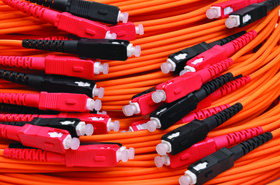A specification for 800 Gibabit Ethernet has emerged from the Ethernet Technology Consortium, an industry consortium that includes Arista, Broadcom, Cisco, Dell, Google, Mellanox, and Microsoft.
Faster Ethernet will speed communications within and between data centers. The specification is available now, and intended as a basis towards a formal standards work that will eventually come from the IEEE. The Ethernet Technology Consortium is rebranding: when it was founded in 2014 to promote the next breakthrough in network speeds, it adopted a name which now seems somewhat outdated: the 25 Gigabit Ethernet Consortium.
Fast movers
“Ethernet is evolving very quickly and as a group, we felt that having 25G in the name was too constraining for the scope of the consortium,” said Brad Booth, chair of the Ethernet Technology Consortium. “We wanted to open that up so that the industry could have an organization that could enhance Ethernet specifications for new and developing markets.”
The 25G Ethernet Consortium launched in July 2014 to help specify 25 Gbps Ethernet for a single track (i.e. a single color on a fiber) and 50 Gbps Ethernet on two tracks, and completed its draft in 2015. The IEEE standards body started work in November 2014, and agreed the IEEE 802.3by standard in June 2016. Physical specifications for various types of fiber were then defined and the consortium carried out multi-vendor test demonstrations in 2017.
Now, attention has shifted to speeds beyond 100Gbps, with a move towards "Terabit Ethernet." The big goal ETC is heading for is an 800Gbase-R specification (base-R denotes the current family of standards over current media, where base-T and base-C denoted previous generations).
As with previous Ethernet iterations, a lot of technology will be reused and developed. The 800Bbase-R specification (or 800 GbE) will need new definitions for media access control (MAC) and physical coding sublayer (PCS). These will be re-purposed from the existing specification for 400GbE in the IEEE 802.3bs standard, redefined to work on eight 106 Gbps lanes. Other parts of the specification for features such as forward error control are kept on for compatibility.
“The intent with this work was to repurpose the standard 400 GbE logic as much as possible to create an 800 GbE MAC and PCS specification with minimal overhead cost to users implementing multi-rate Ethernet ports,” said Rob Stone, ETC technical working group chair.
The group has published its specification already, available on the ETC's site.




